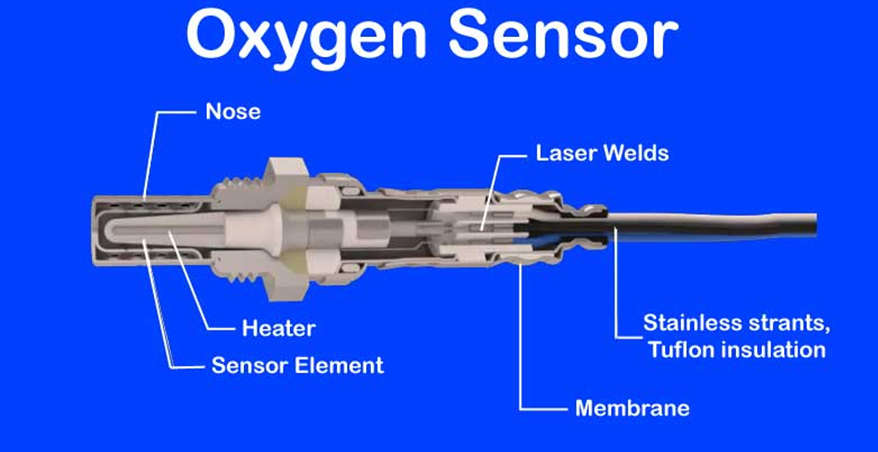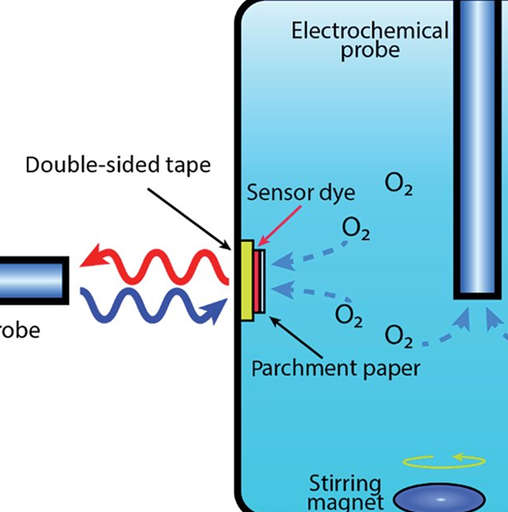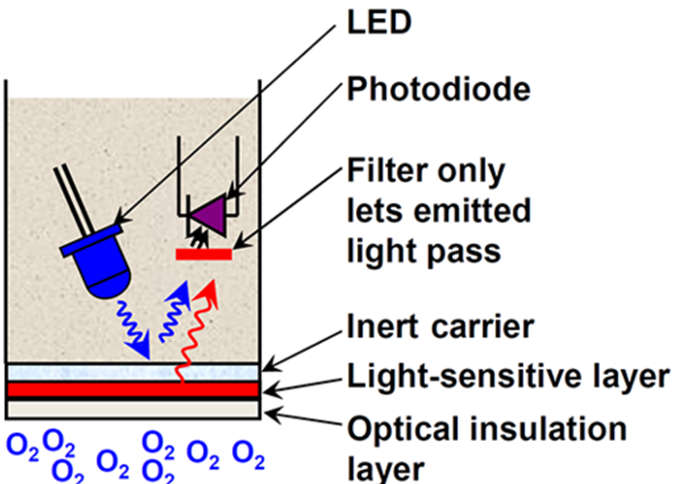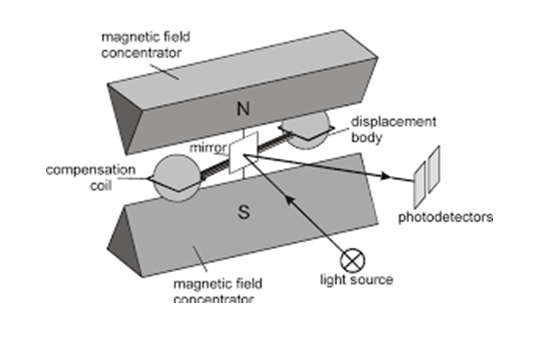- An oxygen sensor or lambda sensor is an electronic device that measures the proportion of oxygen (O2) in the gas or liquid being analyzed.
- here, lambda refers to air–the fuel equivalence ratio, usually denoted by λ.
- It was developed by Robert Bosch.

Working Principle of Oxygen Sensor
The oxygen cylinder works on three principles
- A chemical reaction that gives off electrons in the presence of oxygen.
- In this, the presence of oxygen produces a chemical reaction in the sensor which results in generating an electrical output.
- A change in light intensity is given off by a fluorescent material when exposed to oxygen.
- In this, a light source is used to incident light and detect the behavior depending on the amount of oxygen.
- A change in the wavelength of sound, light, or change in a magnetic field as oxygen passes through it.
Applications of Oxygen Sensor
1) Electrochemical Oxygen Sensor
- These are primarily used to measure oxygen levels in ambient air.
- They measure a chemical reaction that is produced in the sensor when reacted with oxygen that is to be tested and create an electrical output proportional to the oxygen level.
- As electrochemical sensors produce a current, they are self-powered, making them useful for measuring oxygen gas.
- Breathalyzers, respiratory sensors, and blood glucose sensors are some examples.

2) Optical Oxygen Sensor
- Some molecules or compounds, when exposed to light, emit light energy. And if oxygen molecules transfer the light energy it results in less fluorescence.
- A known light source is used and the amount of light energy is detected which is inversely proportional to the number of oxygen molecules in the sample.
- Therefore, the less emission of light energy(fluoresce) is detected, the more oxygen molecules must be present in the sample gas(inversely proportional).

3) Paramagnetic Oxygen Sensor
- Paramagnetic oxygen sensors rely on the fact that oxygen molecules are attracted to strong magnetic fields.
- The sample gas is introduced into the sensor and passed through a magnetic field.
- While not a common sensing technology, it can be used in industrial process control applications where a zirconia oxygen sensor cannot.

